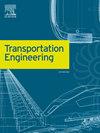Low-budget equipment facilitating skid coefficient extraction for traffic accident analysis
Q1 Engineering
引用次数: 0
Abstract
Traffic accident reconstructionists play a vital role in providing reliable analyses to justice authorities by examining evidence at accident scenes. Skid marks, a critical form of evidence, are often used to calculate a vehicle's speed. However, this requires the skid coefficient—a parameter influenced by factors such as road conditions, vehicle type, and climate. Many reconstructionists, due to a lack of resources, rely on fixed tables to approximate this coefficient, which can lead to inconsistent results and compromise the accuracy of speed calculations. Existing solutions are either costly or unreliable, further complicating this analysis. This study introduces a cost-effective tool built by forensic experts designed to address these challenges and improve the accuracy of determining the skid coefficient. The device, mounted on a vehicle, features an electromechanical system that ejects ink onto the road surface when brakes are applied, while simultaneously recording the vehicle's speed. This setup enables reconstructionists to dynamically measure the skid coefficient, providing a more precise basis for calculating vehicle speed. Additionally, the device transmits comprehensive logs directly to an investigator's smartphone via email or an Android application, streamlining data collection and analysis. Field tests with three vehicle types—a sedan, a pickup truck, and an 18-wheeler truck, demonstrated the device's reliability and efficiency. Unlike traditional approaches, this solution accounts for skid marks and brake activation, offering a more comprehensive and accurate method for traffic accident reconstruction. By addressing key limitations of existing methods, this tool represents a significant step forward in the field.
求助全文
约1分钟内获得全文
求助全文
来源期刊

Transportation Engineering
Engineering-Automotive Engineering
CiteScore
8.10
自引率
0.00%
发文量
46
审稿时长
90 days
 求助内容:
求助内容: 应助结果提醒方式:
应助结果提醒方式:


